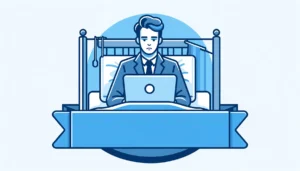Reflecting on a career in wellbeing with Becky Thoseby
- 6 Min Read
Becky Thoseby recently celebrated her two-year anniversary as Group Head of Wellbeing, Department for Transport (DfT). Becky looks back on the main challenges she has faced in her role, and what she has learnt in her time at DfT.
- Author: Becky Thoseby
- Date published: Apr 8, 2019
- Categories

I’m just approaching my two year anniversary as Group Head of Wellbeing, and as well as thinking “where did that time go?!” I’ve also found myself reflecting on what I’ve learned during the past two years. When sketching out my notes for this piece, I was struck by how obvious some of it seemed, and yet simultaneously how useful it would have been to know it all when I first started. So here’s a round up of my key learning from my time in post so far.
 Link your wellbeing strategy to your organisation’s vision, mission and values
Link your wellbeing strategy to your organisation’s vision, mission and values
When I first started in post, people would often ask me to make the case for wellbeing, which I found surprisingly difficult. It was one of those things that was so obvious to me, I struggled to articulate it to others. Luckily DfT has a vision well known to employees with a number of strands, one of which is “Great Place to Work”. I quickly realised that if I linked wellbeing with this, it gained legitimacy. When I started saying “we do wellbeing because it contributes to the ‘Great Place to Work’ strand of the DfT Vision”, people would nod as if I had spoken some profound truth.
Get a senior sponsor on board
Having a Board member as Wellbeing Champion has been enormously powerful for me. Employees will read messages from him that they wouldn’t bother with if they were from me, it gives me a seat at the table with the organisation’s most senior people and it provides legitimacy for the wellbeing agenda. I was lucky enough to have someone put themselves forward for this, but if nobody has done so in your organisation, don’t be shy to ask. And try not to hold any preconceptions about who might be right for the role. The person who put himself forward was not the one I would have expected, but it’s turned out to be a great relationship.
Don’t try to do it alone
With all the will in the world, especially if you’re in a large organisation, you will struggle to reach everyone. And employees will listen to colleagues they know and trust in their own business area more than they will listen to you. I probably battled on longer than I should have done ignoring this fact. I had a few wellbeing-friendly colleagues who helped me with publicising things, but it wasn’t enough. To this end I set up a formal network of wellbeing advocates who help me with intelligence gathering, awareness raising, and encouraging employees to get involved in wellbeing initiatives. They helped me get a good response rate to our employee wellbeing survey, and made a fantastic contribution to our yearly Wellbeing Week through blogs, talks and events. One of them has even
become a good friend.
Develop a strong brand and communicate, communicate, communicate
This idea was way out of my comfort zone but it quickly became one of the cornerstones of my work. Employees need to understand what “wellbeing” means to the organisation, what it has to offer them and what they might need to do differently. A strong brand will do this and help you gain buy in. I also learned that once you

have developed the brand, it’s not possible to overcommunicate. Find different channels to get your message out to employees and don’t be afraid to experiment with something new. For example, I did a talk show style interview with our Wellbeing Champion without knowing whether it would be unbearably cheesy, but it worked really well and got great hit rates on our intranet.
Focus on line managers
One of the first things I learnt is that the line manager is the #1 determinant of workplace wellbeing. So if you focus your efforts in just one place, this should be it. If line managers are treating their team members with consideration and respect, allowing them the time and space to take care of their own wellbeing, creating an atmosphere where they can raise concerns and pointing them towards the right sources of support when they need it, everything else is just the cherry on top. I wouldn’t mind betting that productivity would take a leap too.
If people don’t use your support services much, don’t sweat it
In the early months, I wasted a lot of energy angsting over why so few employees used our employee assistance programme. Then I launched a Mental Health First Aid service, and wasted more energy being disappointed that take up was low. In the end I realised, these services are there as much to act as a hygiene factor as to actually be used. They send a signal to employees about the type of organisation this is, that we want to be there for them when times get tough. If employees get that message, and then choose to take their issues elsewhere when they need to, that’s ok. Finding out that take up of such service is low in organisations across the UK reassured me a great deal too.
Pay attention to organisational culture
After I’d been in post a little while, I began to realise that if I was going to change anything systemically, I needed to focus on organisational culture. The implicit signals that culture sends about how business is done, what behaviours are rewarded and valued, and what is prioritised, can undermine or give immense power to the explicit messages that you deliver about wellbeing. So think about how organisational culture is communicated to employees in your organisation. What are the arenas in which stories are told? How do new joiners form a picture of what the organisation is like? What do formal policies and how they are followed tell employees about the organisation?
Be patient
Which brings me to my final learning point – be patient. Organisational change, particularly in the culture space, does not happen quickly. As someone in my network put it, “this stuff happens at glacial speed”. Not being a naturally patient person, this has been challenging for me, and it can also be difficult when senior colleagues want to see results. But hold your nerve, and you’ll be rewarded.









